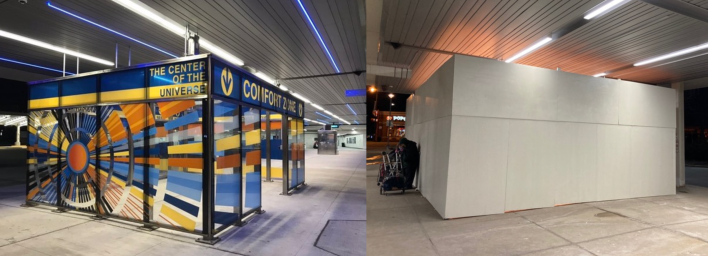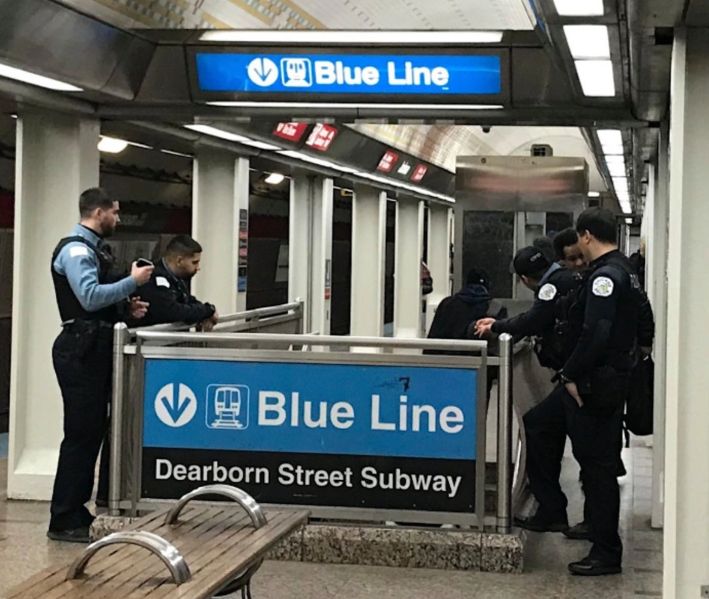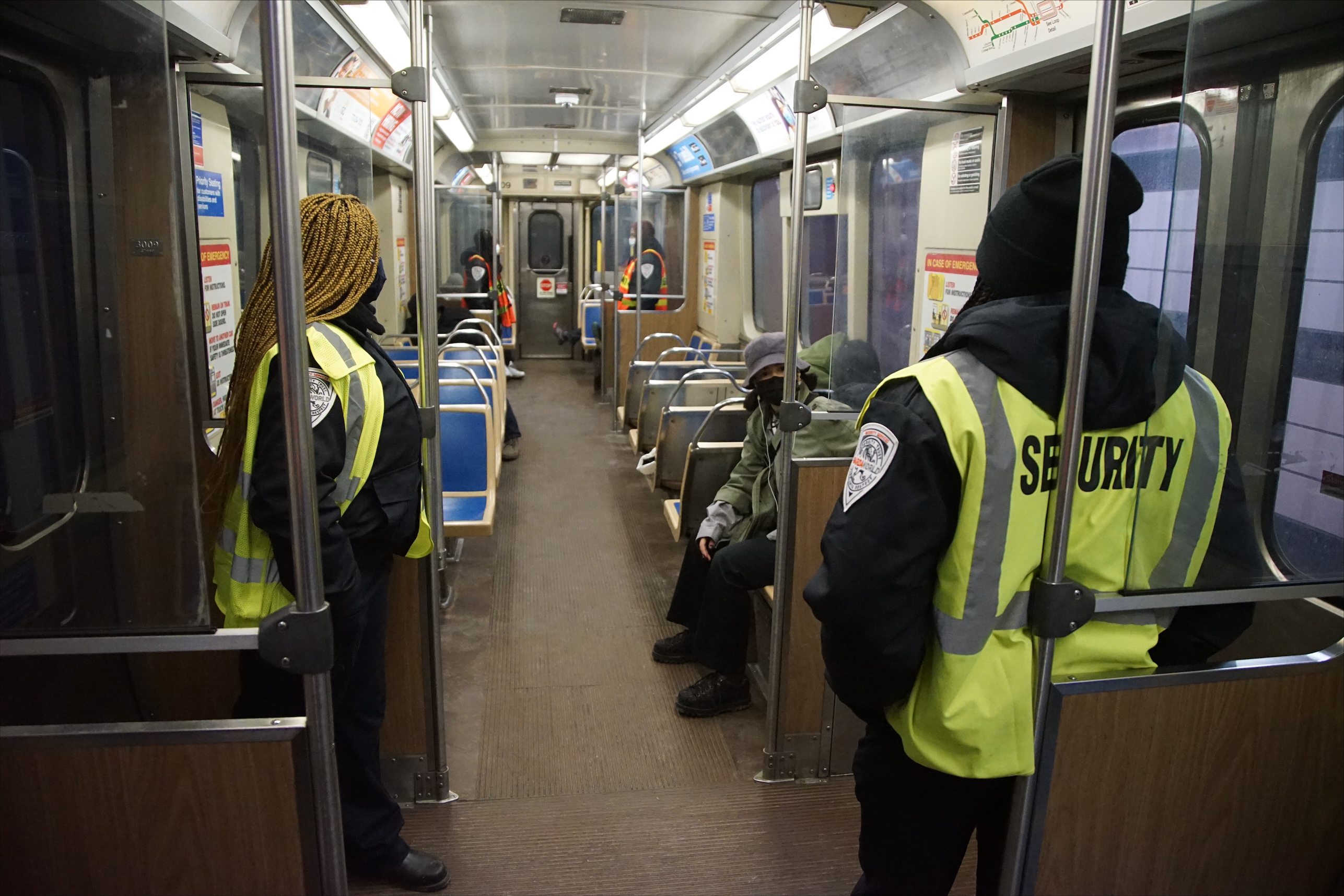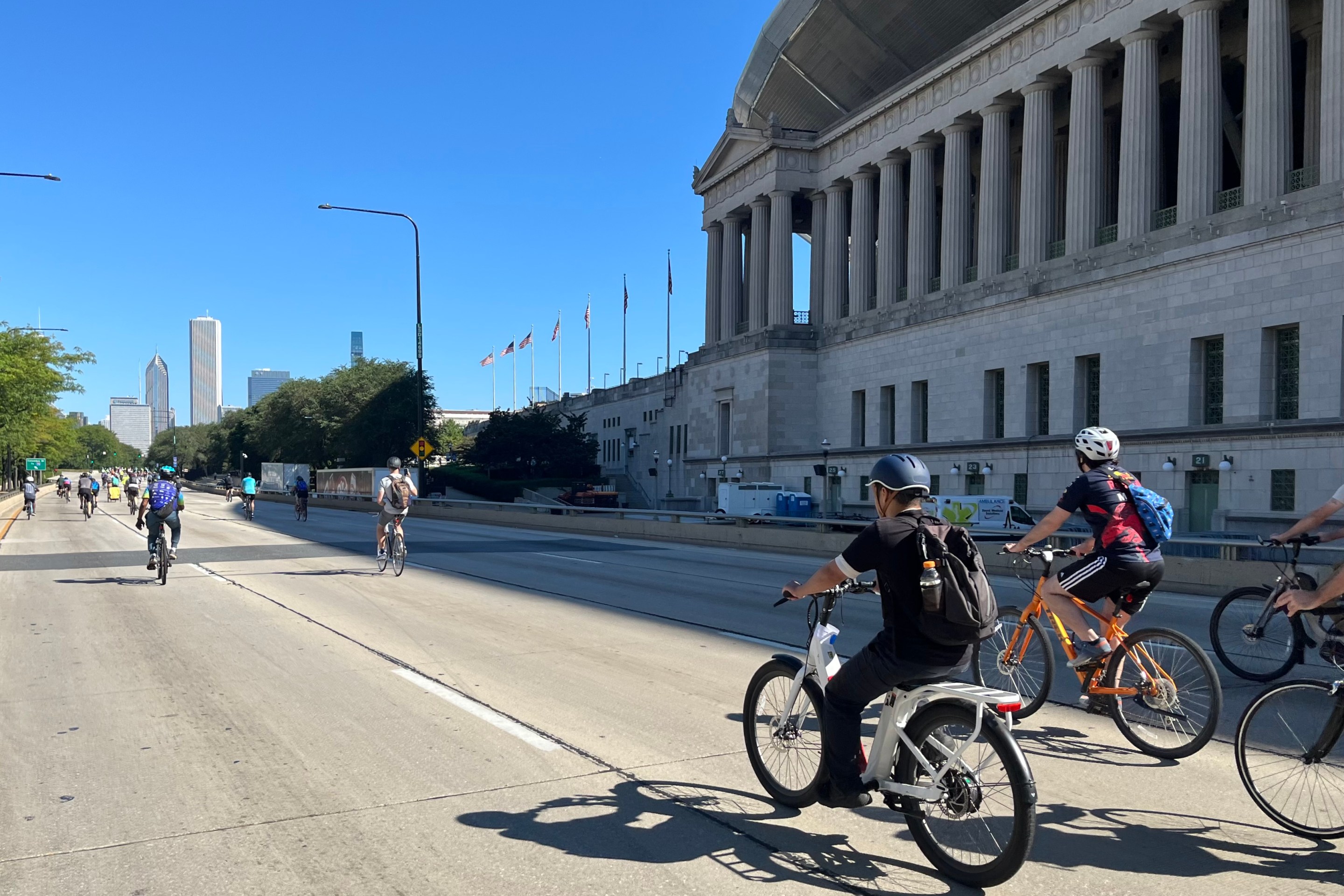Update 3/10/22, 9 AM: According to a Sun-Times report, Eric Dixon, president of the Amalgamated Transit Workers Union Local 308, dismissed the new unarmed guards as "window dressing" and called for the CTA to bring back conductors.
You know that violent crime, smoking, and unsanitary conditions on the CTA have really gotten out of hand when even city officials are admitting there's a problem. In a statement last Thursday announcing an increase in the deployment of unarmed security guards on the transit system, the agency acknowledged "safety concerns and a recent uptick in people violating CTA’s Code of Conduct" during the COVID-19 pandemic, when far fewer people have been riding.
By the numbers, the violent crime rate on the 'L' more than doubled between 2019 and 2020. Violent crime on trains is up another 17 percent so far in 2022, compared to the same period in 2021. Here are some headlines about the Red Line from just the past ten days to give you a sense of what's been going on.
- February 28: Vadarrion A. Knight, 16, fatally shot outside Grand Red Line station
- February 28: Man, 30, pistol-whipped, shots fired outside Grand Red Line stop
- March 2: Man robbed of phone by three males on Red Line at 47th Street
- March 2: Three people shot outside Red Line's Howard station
- March 8: Man shot, critically wounded on Red Line near 63rd Street station
Less serious, but also disturbing, are a couple of recent large-scale, seemingly random acts of vandalism of CTA property.
- February 27: Bus shelters at Jefferson Park terminal boarded up after man used drill to damage art panels
- Early March: Man breaks 14 windows on Green Line train in Oak Park with a hammer, causing $5.5K in damage

And then there are the everyday issues of air quality and sanitation that, by all accounts I've heard, have gotten much worse during the last two years, including smoking, garbage, and people using rail cars as bathrooms. If city officials continue to let the system descend into chaos, anyone who can will avoid using the system, creating a “transit death spiral” of falling ridership, fare hikes, and service cuts. That would be bad for all Chicagoans, but it would be especially harmful for transit-dependent low-income and working-class residents.
As a sign that the Lori Lightfoot administration is taking this issue seriously, the mayor held a downtown press conference along with Chicago Police Department superintendent David Brown and CTA president Dorval Carter to discuss strategies to promote a safe and sanitary transit system. However, there's sure to be controversy over whether they're taking the right approach.
In February 2020, the same afternoon Lightfoot announced a plan to have 50 additional police officers patrol the CTA in response to a recent wave of violent crime on transit, police shot and critically wounded an unarmed man at the Grand Red Line stop after trying to detain him for illegally walking between train cars. Shockingly, the officers fired up an escalator at the busy station, which could have easily resulted in bystanders also being wounded or killed. That incident highlighted the downsides of adding more armed personnel to the system, increasing the potential for enforcement of minor infractions to escalate to bloodshed.
Today city officials announced that police resources be shifted from within the Bureau of Counterterrorism to the CTA, with teams of police focusing on the 24-hour Red and Blue lines. They said the CPD will coordinate with the transit agency to analyze crime data to determine the most important places and times to deploy officers, such as the high-crime Jackson Blue and Red stops at night, with an emphasis on preventing and responding to gang- and drug-related violence.

The CTA is also greatly increasing the number of unarmed, uniformed security guards on trains and buses. This morning board members approved a $71 million in contracts for multiple years with Inter-Con Security and politically connected Monterrey Security. While the guards currently only work five days a week, they will now be deployed every day, and their numbers will double to more than 200, according to CTA spokesperson Brian Steele. In light of the Grand Red Line station police shooting, it's good that most or all of the new security personnel will be unarmed civilians.
Steele told me that the guards are intended to act as a deterrent to crime and rule-breaking, and they will also double as customer assistants who can help riders navigate the system. They are trained in conflict resolution and de-escalation, and are briefed about CTA operations so they can answer questions about bus and rail service.
When the guards encounter truly problematic behavior like smoking, they politely ask the person to stop what they're doing, Steele said. If the person refuses to cooperate, they may call for police backup.
Did CTA sign a new security contract? There were like 15 guards in Monterey Security uniforms at Grand (being joined by CPD), and additional guards boarded at Clark/Diversey. pic.twitter.com/1GsqBlulvx
— kyle tear down that highway lucas (@itskylelucas) March 2, 2022
During the pandemic, when more Chicagoans have been facing economic and mental health crises, there's been an increase in homeless people, some of them with mental health challenges, using the CTA as an emergency shelter. Asked how security guards are instructed to respond to the common phenomenon of rail cars with multiple people sleeping across the seats, in violation of CTA rules, Steele said the guards would notify the CTA control center, "and then we would engage social services and/or the police department as needed."
Steele noted that the agency has a partnership with the Night Ministry, a nonprofit social service provider, to regularly do outreach to people experiencing homelessness, which can include offering to connect them with shelters and offering masks, clothes, food, and personal hygiene items.

At the presser, Lightfoot called the 17 percent increase in crime this year "simply unacceptable." "We want to make sure the transit experience experience is not only safe but clean, something we can all be proud of."
During the Q & A, I noted that it appears that a significant amount of the public safety and sanitation issues on the CTA – although obviously not all of them – involve people experiencing homelessness and/or mental illness. I asked whether, in addition to the $71 million in security contracts, the city has considered increasing funding to house the homeless and provide mental health services to those need them as a strategy to help make the CTA safer and cleaner.
Dorval Carter responded that the cash being spent on security is "money well spent," since it will involve deterring crime and offering services to the unhoused.
“It’s not one or the other,” Lightfoot responded, citing $1.2 million in resources “for mental illness and trauma across the city, in addition to providing resources specifically for homeless prevention, as well as making sure that we’re expanding our offerings of affordable and transitional housing.”
"The complexity of homelessness in our city, particularly with those folks who have gravitated towards our transit system is complicated," Lightfoot added. "There's a whole team and a strategy that is used to engage with homeless people on our trains, leading with our social services, and we've allocated even more resources in this budget, as we did last year, to make sure that we're continuing to have a network of care to be able to engage with our homeless population all across the city... So we've got to do both."
It will be important to monitor whether the increase in security personnel leads to more unhoused people, including those who aren't causing serious problems for other riders, being ejected from the system without being offered a better alternative for shelter. Streetsblog will talk to homeless advocates in the near future to get their take on today's developments.






